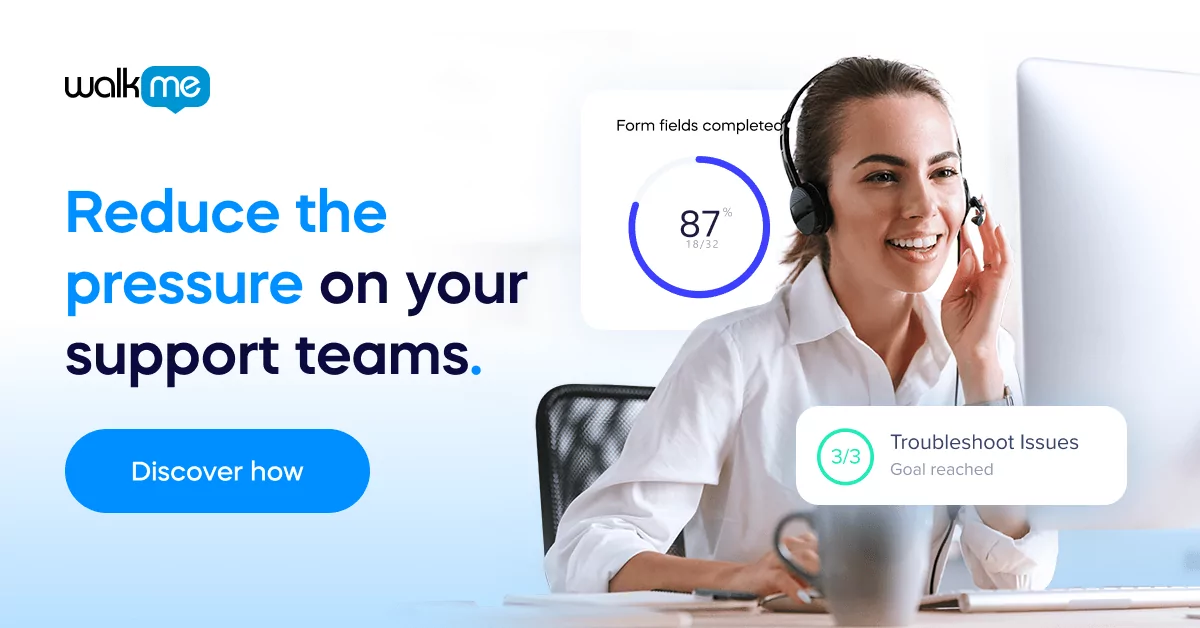What makes a personal touch so impactful for customers?
In recent years, personalization and it’s leveled-up successor, hyper-personalization, have become major trends in both B2B and B2C markets. Customized experiences are being used across virtually every customer-facing business function, including:
- Advertisements
- Customer care
- Marketing
- Sales interactions
- Product UX
- Technical support
In short, personalization is well on its way to becoming the new norm in virtually every area of business—but why is it so important to customers?
What is hyper-personalization?
Personalization in and of itself is nothing new. In fact, it could be considered a staple of the sales industry, where skilled sales representatives strive to establish rapport, create a unique relationship, and personalize the benefits of a product or service in order to make the sale.
In other words, personalization is simply a part of building instant and lasting relationships with customers.
What is new, however, is the ability to hyper-personalize customer experiences at the level of the individual, an activity that would have been prohibitively expensive before the digital age.
Here are a few examples to illustrate what hyper-personalization looks like:
- eCommerce recommendation engines are software programs designed to recommend specific products based on one’s browsing history. Amazon’s recommendations are perhaps the most well-known example, though these engines appear in countless other services, from eCommerce sites to news pages to streaming services like Netflix.
- Social media feeds, such as Facebook or Twitter feeds, are another example of personalization in action. Just as recommendation engines attempt to offer maximum customer value by recommending content, social media feeds aim to maximize engagement by personally tailoring the content in one’s social media feed. And this can be used to great effect—Tik Tok, for instance, used an AI algorithm to exponentially grow its user base and surpass competitors such as Facebook.
- Customer service chatbots can tap into customer data to personalize the customer experience, enabling customers to solve their problems more quickly, without the need for human intervention. Amazon’s chatbot is one example of this. The software not only accesses a shopper’s recent activities, but it can also automate common actions, such as canceling an order or requesting a refund.
Hyper-personalization, it should be noted, has not only made its way into the business-to-consumer world but also into the business-to-business world and even into the workplace.
For instance, digital adoption platforms (DAPs) can be used to analyze users’ interactions with software, personalize training and onboarding processes, offer customized in-app guidance, and more.
Should your organization hyper-personalize customer experiences?
The importance of personalization should not be underestimated. As in the example of TikTok mentioned above, personalization can be a massive competitive differentiator.
Although not every company can invest in cutting-edge deep learning algorithms the way TikTok did, personalization is still advantageous, if not essential.
For instance:
- 80% of customers are more likely to make a purchase when brands offer personalized experiences, according to Epsilon
- 90% of consumers are willing to share behavioral data for a cheaper and easier brand experience, according to SmarterHQ
- 63% of consumers expect personalization as a standard of service and believe they are recognized as an individual when sent special offers, according to a survey from RedPoint Global
Despite the desire for more personalized experiences, many people still want brands to respect their privacy. According to Oracle, 87% of consumers in North America would request that brands remove their personal information if given the option.
Forrester dove even further into customer preferences, finding that consumers were more willing to share certain types of data, such as hobbies and interests, than others, such as who one’s friends are on social networks. Their research also found that around 17% weren’t willing to share their personal data at all.
While the exact numbers may have changed since the above studies were performed, it does demonstrate a critical point: people care about privacy. It is also a legal matter for many countries, as in the case of GDPR, which gives EU citizens the right to manage personal data collected by an organization.
Both for legal reasons and to respect customers’ privacy, it is important to find ways to both personalize the customer experience and offer privacy protections.
One example of this is WalkMe Insights, a software analytics tool that identifies users’ interactions with software, while scrubbing personal data to maintain privacy.
Striking the right balance for a competitive advantage
The bottom line is that hyper-personalization is becoming an inevitable part of our digital lives, not only in the world of eCommerce but also at work and even in our daily lives.
Personalization will continue to drive increased profit potential across domains, which can generate major competitive advantages when adopted early and used effectively. Those who fail to keep up with the personalization trend, however, could easily lose ground to competitors.
Some companies may prefer to put privacy first, but, as we have seen, this does not exclude the possibility of personalization. By anonymizing data, being transparent about data usage and collection, and listening to what customers want, companies can both protect their customers’ privacy while still providing products and services that are more personalized and relevant.


